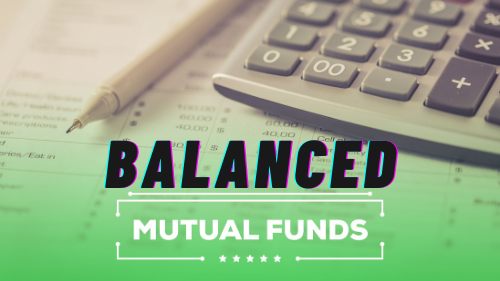What Is A Balanced Mutual Fund?
A balanced mutual fund is basically a mutual fund that is a combination of bonds, equity (stocks) and cash holdings. The goal of this type of fund is to conserve capital, appreciate capital, as well as create an income stream. These funds are usually geared toward investors who are looking for a mixture of safety, income, and modest capital appreciation.
If you’re looking for balanced mutual funds, keep in mind that this term isn’t really used very much these days, so you will want to look for asset allocation instead. Some funds will also use a year number and these funds will usually have more bonds than stocks and the closer that the year is to the year on the fund then the better the fund will perform.
If you’re a conservative investor seeking growth that outpaces inflation and income that supplements current needs, a balanced mutual fund is perhaps a good investment choice for you because the risk involved is lower. This fund is also good for retirees with low risk tolerance whose primary focus is on income preservation and modest growth.
Why is a balanced mutual fund considered less risky than one that is not balanced?
The Balanced mutual fund has 2 main components:
- The equity component
- The bond component
The equity component of a balanced fund yields a greater rate of return and helps to prevent erosion of purchasing power due to inflation, thus securing the long-term preservation of your retirement nest egg. On the other hand, the bond component of the fund yields a lower rate of return but serves two purposes.
- Creation of an income stream
- Tempers portfolio volatility
However, do keep in mind that balanced mutual funds do not mean that you have a completely safe investment as these funds can be just as volatile as any stock investment. There is no investment that has zero risk — not even a regular savings account since inflation will erode your money. There is always some risk involved with stock investing and that is one reason why it is good to balance your funds so you don’t have all your eggs in one basket.
A good mutual fund will enable you to be more diversified with your money. Not only can you hold stocks and bonds but you can do so across different countries and different sectors of these holdings. You can actually put your own balanced mutual fund together if you want to go down that path, but it is much easier to have someone that is experienced in this area to put one together for you.
Your mutual fund portfolio should include a number of different funds with multiple investment objectives. There are funds that will do this automatically so there is no need to arrange a fund manager to do it for you. There are quite a few different combinations available and if you have no experience in this area it can be quite overwhelming, not to mention confusing.
But like for any investment ventures, you really do need to do your research before jumping in so you have some idea of what is involved and what the different terms mean. And if you have an idea of which mutual fund you want to invest in, you can ask for the fund prospectus so you can view information about the fund including risks, fees, fund manager’s objectives and practices, and the kind of securities the fund holds, the kind of transactions it makes, and how often.
There may be some investment terminologies in the prospectus that can be difficult to understand so if you have trouble you may want to find someone that can explain it all to you. It is important to know everything about the fund before you invest as this is your money and your future at stake.
Once you have looked through the prospectus and get an understanding of it then you can make a decision about how you want to proceed. One factor that you will want to consider is the percentage of the combined funds. A balanced mutual fund usually has a 60/40 percentage allocation to equity and debt respectively.
And when you have made the decision as to what fund to proceed with then you can just hand over your investment money and the mutual fund manager will handle everything for you. They will deal with the purchasing of bonds and stocks and other holdings and all you need to do is sit back and watch your funds grow.
Two main disadvantages of balanced mutual funds are: the lower rate of return and the inability to use tax-shielding strategies with them. For instance, if you want to put the income-producing securities in tax-advantaged accounts and the growth stocks in taxable ones, you can’t separate the two in a balanced fund.
This is another reason why it is important that you understand the ins and outs of a fund, and your goal for your money before you embark on the investment.

